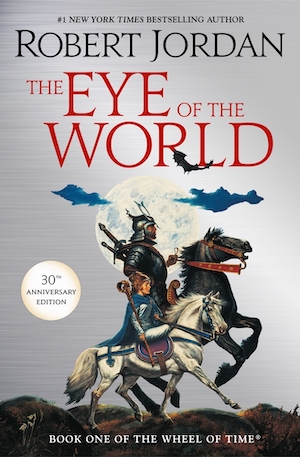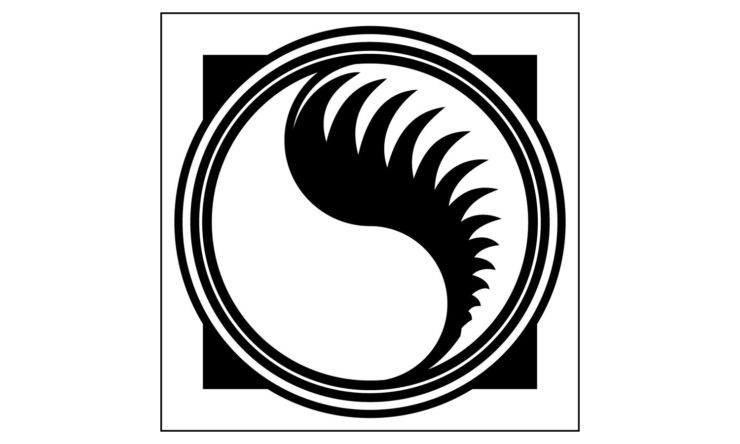While Spirit was found equally in men and in women, great ability with Earth and/or Fire was found much more often among men, with Water and/or Air among women. There were exceptions, but it was so often so that Earth and Fire came to be regarded as male Powers, Air and Water as female. Generally, no ability is considered stronger than any other, though there is a saying among Aes Sedai: “There is no rock so strong that water and wind cannot wear it away, no fire so fierce that water cannot quench it or wind snuff it out.” It should be noted this saying came into use long after the last male Aes Sedai was dead. Any equivalent saying among male Aes Sedai is long lost.
—Glossary, The Eye of the World
I, like many other fans and critics, have written before about my dislike of the gendered nature of channeling in The Wheel of Time. You don’t have to be a gender studies major to recognize the problems with suggesting that the driving power of the universe is divided into two halves, which are diametrically different from each other and which each correspond to human gender.
Even if you (incorrectly) believe that there are only two genders (nope) and that these genders are recognizable by a strict and limited set of physical traits (nope again), this premise still doesn’t make a lot of sense. Sure, it corresponds to the general societal assertion that men and women are basically different species. But if you think about it for more than five seconds, the idea becomes pretty laughable, especially when you consider the complexities of physics and philosophy that Jordan employs in other aspects of his world-building in The Wheel of Time.
Consider, if you will, how the One Power is accessed. A woman channeling saidar must surrender to its river-like flow, opening up to it like a blossoming flower and letting herself be filled, then guide in the direction she wants. A man, on the other hand, has to seize control of the wild torrent of saidin, fighting it every step of the way and bending it to his will before he can “wield” it, like a tool or weapon. It does make sense to think of the One Power as a river (and the Wheel of Time as the waterwheel over which it flows) and a great river will have both rough, turbulent parts as well as slow-moving, deep parts. But what happens to a male channeler who is not a dominant type of person? Can he not learn to channel well? Are only men with the proper commanding and aggressive tendencies given the ability in the first place? Or is the insinuation that this is just what men are like, all men, and so saidin’s nature makes perfect sense?
The problem becomes even more obvious when we consider women and saidar, since we have so many more examples to choose from. What, I ask you, is particularly yielding about Moiraine, or Siuan? Or Elaida, for that matter? How about Nynaeve? I mean, it makes sense, given her personality, that she would have a block around channeling. But rather than that block being overcome only in moments when she can convince herself to relax and let go of her need for defensive control over everything, it is overcome only by her anger and rage. That sounds to me like a technique that would be far more effective with saidin.
Buy the Book


The Eye of the World: Book One of The Wheel of Time
The obvious connotation between concepts of “yielding” and “subduing” respectively is an uncomfortably physical one, referencing traditional ideas of heteronormative sex, and the concept really isn’t born out in any other way within the narrative. It would have made a lot more sense for one’s access to saidin and saidar to have to do with temperament: People who prefer to work more calmly and sedately, people who are open and empathetic and calm, are channelers of saidar, while those who are bold to the point of brashness, who prefer big deeds and feats of strength and daring, are channelers of saidin. If you remove the gendered element from these categories, it actually gives you a lot of room to play with character types, with how channelers work together and what sorts of strategies different types of people employ. Instead, Jordan has written himself into a bit of a corner, presenting us with a host of fierce, stubborn, brilliant female characters and then either ignoring or finding ways around the assertions about their character that his own world-building is making.
The Five Powers present a similar problem. When we were first introduced to them I thought they were merely a human concept, a way of categorizing what you can do with the One Power. But given what we have seen of channeling and flows now, it seems they are actually alike to the classical elements, they are the base components that are being manipulated by channelers. This also feels a bit simplistic, but perhaps that is because the greater understanding of things like atomic particles have been lost to the Aes Sedai of Rand’s time. I appreciate how the gendered lines are blurred a little here—men are generally better with Fire and Earth and women with Air and Water, but not always. (Shout out to Moiraine who primarily uses Earth and Fire, at least as far as the first four books, and to Egwene’s impressive skill with Earth). I’m curious how all five elements are equally manipulatable by saidin and saidar; the difference seems to lie solely in the strength and natural tendency of the channeler. If we’re going to mark saidin and saidar as being two halves of the substance that makes up all of creation, how is it that any part of creation can be touched and manipulated by only one half of that whole?
The narrative does address this to an extent: More than one character has spoken about how the feats of channeling that can be achieved by men and women working together are far greater than either gender can accomplish alone, and I think that might be one of my favorite concepts in regards to channeling. With the taint on saidin and the subsequent gentling of all male channelers, it’s hard to say what this teamwork really looked like, and I hope we get to see our Emond’s Fielders figuring some of these things out going forward.
I think what rankles me most about the binary structure of the One Power is the fact that Jordan has some truly complex ideas for the makeup of reality in The Wheel of Time. Take the mirror worlds, for instance, in which all the choices of one’s life are reflected in other realities in which a different choice was made. The Aes Sedai only know a very little about these worlds, but they appear to be only echoes of the “real” world, and there are some that are quite close to Rand’s reality while others are much farther away, and much more different. This idea, that every choice might be played out to each possible conclusion, resembles the theory of daughter universes, developed from the observation of how subatomic particles behave. Rather than just one outcome to an event, there is, in fact, every outcome, reflected in multiple realities.
There appears to be a distinct difference between the “mirror worlds” and “parallel worlds,” and I love the way Jordan is exploring these ideas. There is also much I love about the One Power. But the oversimplified and binary nature of it hampers complex storytelling in many places, especially when it comes to character building. Jordan even goes so far as to reinforce this binary throughout the different cultures he creates, which are quite culturally varied and yet seem to more or less have the same ideas about men and women, which matches, and makes impossible to escape, what the natures of saidin and saidar imply about gender.
After seeing what Jordan can do with mirror worlds and Tel’aran’rhiod, I wish the concepts of quantum mechanics were brought out a little more fully in other aspects of world-building. Quantum mechanics, after all, defies neat categorization, boxes and labels. And it definitely defies a binary.
Sylas K Barrett is not a scientist, but was inspired to learn just a little bit more about Quantum Mechanics after seeing this video from Amrou Al-Kadhi on quantum physics and queer identity!










